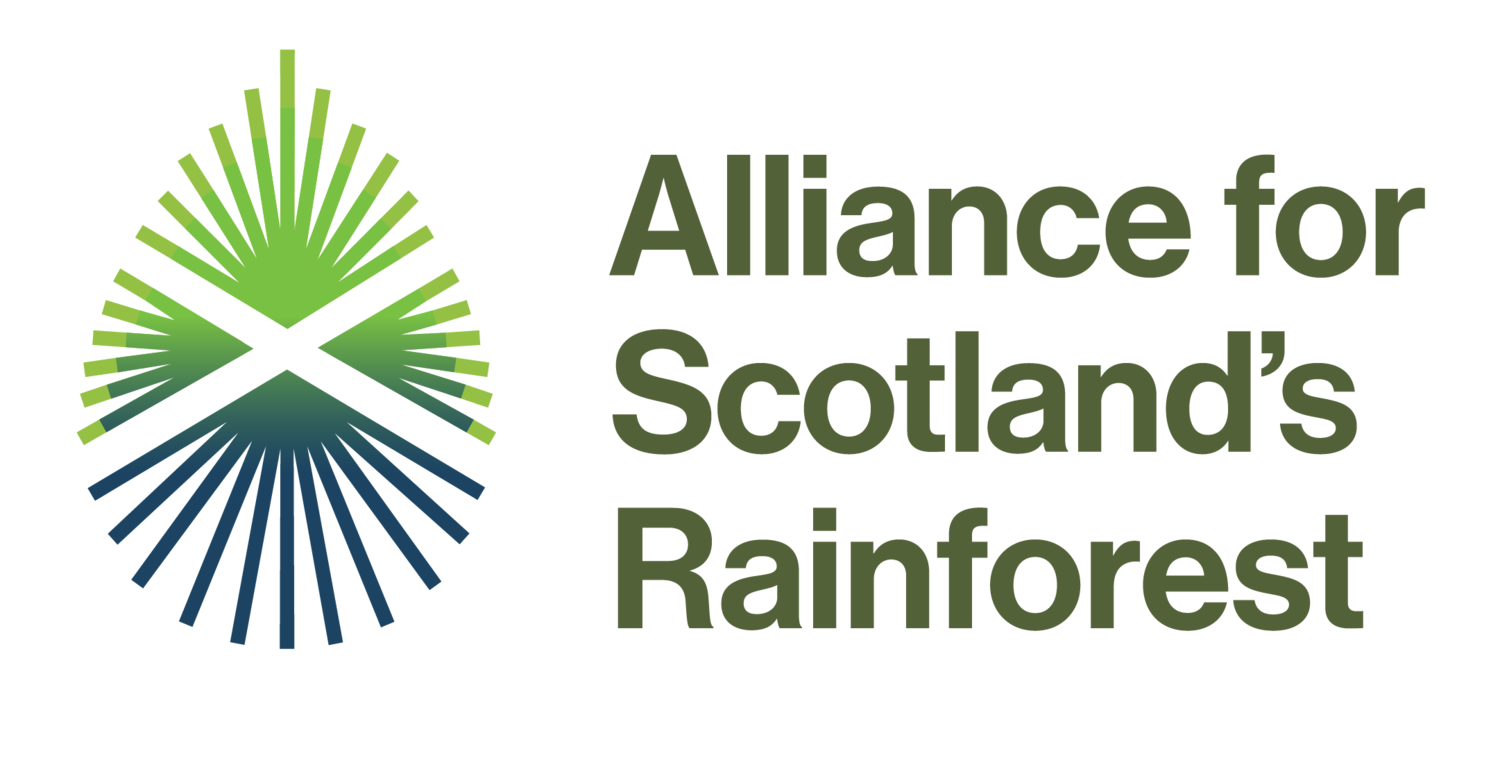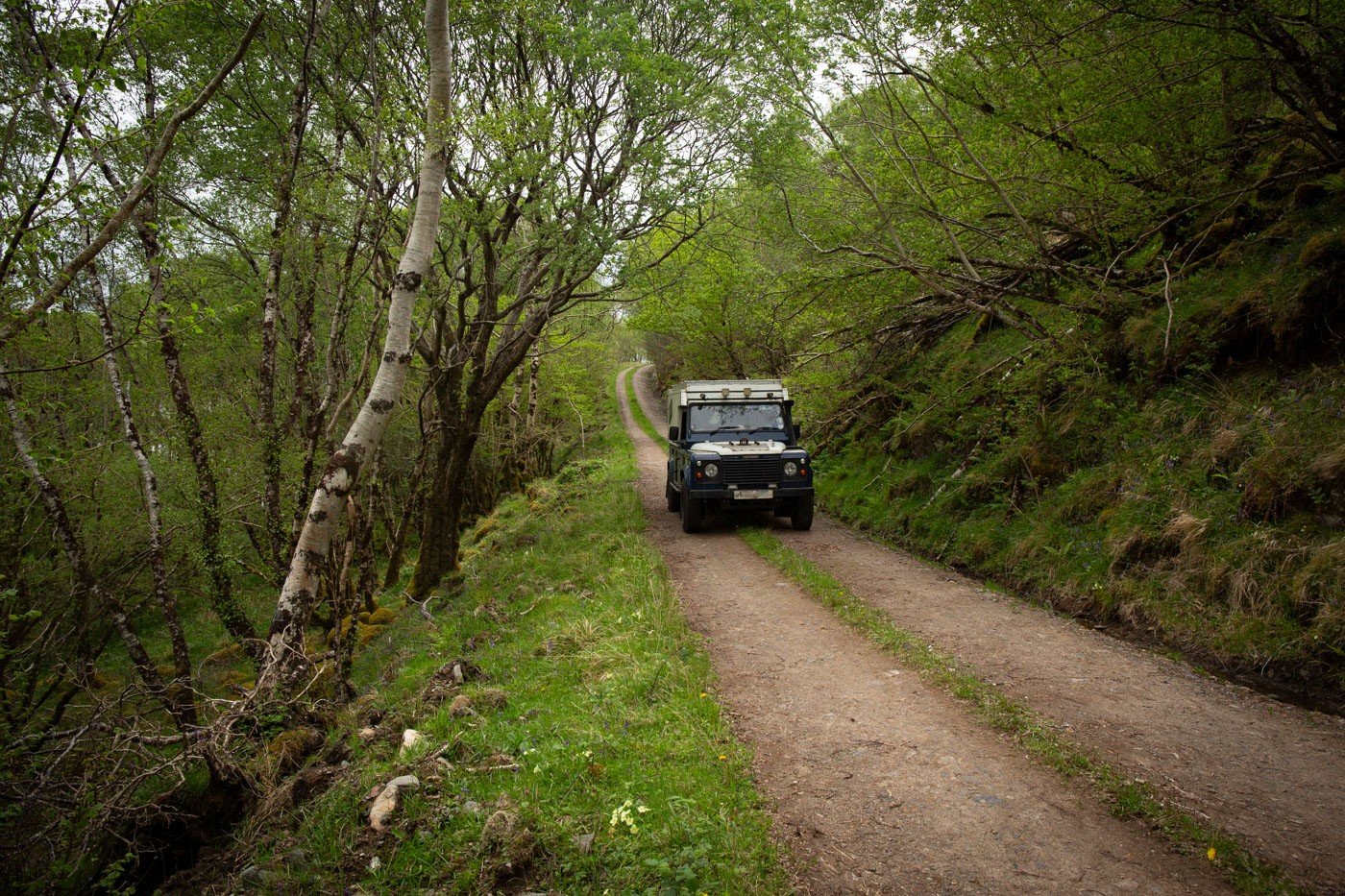A photographer’s trip to the rainforest, part 1
John MacPherson is one of Scotland’s most respected wildlife and landscape photographers. Last spring, we asked him to visit Scotland’s rainforest and take a series of new pictures to help us talk about these remarkable places. This is the first part of his story, accompanied by some of his photos from the trip.
People often remark that when you revisit a place you’ve not been for several years, things look smaller than you remember. But the great thing about trees is they don’t! They nearly always look bigger and more impressive. If they’re still there of course!
I had a return visit to the south side of Loch Sunart in May last year, asked to photograph various woodlands including at RSPB Scotland Glencripesdale, for the Alliance for Scotland’s Rainforest. In my youth back in the 1970s, I was a carpenter and did some work on the estate there at the ‘big house’ repairing windows.
The prevailing westerly weather systems that allow Scotland’s temperate rainforest to flourish inexorably destroy domestic woodwork: doors, windows and roofs all suffer. Such conditions afforded me the opportunity to visit Laudale and many similar locations along the west coast from north-west Lochaber to Argyll, all requiring repair and all, bar a few, set amidst impressive tree-filled landscapes. These days my visits are not about repairs, but still involve wood, the living variety!
How to fulfil a photography contract
These types of woodland photography contracts are a challenge, but ones I particularly enjoy. I get a written brief with copious details: specific places to go; species to try to locate; people to meet and photograph; shots needed in V or H format; space for text to satisfy graphic design requirements; and so on. But then there’s the aspect I consider the REAL challenge: the request that I portray some sense of the ‘character of place’.
Each landscape is different, its mood and atmosphere continually changing, reflecting not only the weather and prevailing seasons but also the inherent qualities it may possess such as ‘wildness’ or ‘remoteness’.
Sometimes the brief may ask that I try to capture ‘intangibles’ – the ways landscapes ‘communicate’ with us. A recent brief asked that I portray ’inspiration’ and ‘solace’ and also (a first for me) ‘ritual inference’ and ‘the cycles of death and rebirth’. And of course, as this is ‘visual storytelling’, it is the viewer who will ultimately decide whether I’ve succeeded, whether some fragments of the stories of a particular place have been imparted.
Barry Lopez, one of my favourite writers on people and landscape remarked: “We keep each other alive with our stories. We need to share them, as much as we need to share food. We also require for our health the presence of good companions. One of the most extraordinary things about the land is that it knows this – and it compels language from some of us so that as a community we may converse about this or that place, and speak of the need.”
Landscapes CAN speak to us, and they can elicit from us a response that may inform others. Some people use words, I use images. This is not an ecologist’s academic analysis of rainforest species, nor a guide to specific places you may visit, instead it is a glimpse into my experience of being in wild places. I’ll try to weave some words around the images I’ve captured that might give readers a sense of these locations, but also hint at the ways I work, and why.
Staying in Scotland’s rainforest without impacting the environment
My preference for the projects I undertake is to go into each place, and to stay on site in my old Land Rover, to be ‘present’ and feel the weather change and witness the fleeting light as day slides into night. I carry water and food in a solar-powered fridge, and spare fuel, heating, and charging capability for batteries so I can undertake the work with minimal impact.
When I leave a site no waste is left, only a few tire tracks to betray my presence. It’s environmentally responsible but also practical. I get to spend more time there, as I’m not driving to and fro from accommodation elsewhere. As a consequence, if I’m lucky I may capture some fleeting fragments of the mood of that place.
Taking good photos of moss needs clouds and a bit of rain
The woodlands along both sides of Loch Sunart are impressive. Mile after mile of oak, interspersed with stands of birch and occasional conifers. Gaining some sense of the scale of these woodlands is difficult.
The south side of Loch Sunart has a rough and narrow private estate track, but on the north side of the loch is the slightly busier (but narrow) public road that hugs the coast. As it winds its way to Ardnamurchan, the public road occasionally affords drivers clear views across to the south side to Glencripesdale and the impressive swathes of native woodland that I would visit later in the week.
These woods are spectacular, hugging the shore and stretching upwards, thicker in the damper gullies and forming a vibrant green blanket. Unfortunately, the weather was not as cooperative as it might have been, and not in the way you might expect. Unusually for the west coast it was exceptionally dry and the bryophyte communities I hoped to photograph (mosses, liverworts and hornworts) were somewhat ‘crisp', waiting for the rainfall that would allow them to absorb and retain the life-giving moisture they thrive on.
The whole ecosystem of which they are an integral part owes its presence to the prevailing warm wet Atlantic weather systems that sweep up Scotland’s west coast. But not this week it seemed! It was warm, and mostly sunny.
However, the forecast did mention the possibility of a spell of overnight showers later in the week, which might coincide with my trip into Glencripesdale. My preference for woodland images is for some cloud cover to allow softer lighting, either wet or dry overcast. I prefer the former, some mist & dampness that may create visually impressive scenes as the moisture glistens and drips off branches to eventually swell burns and cascade down gullies. The clue to what ‘rain forests’ are all about is in the name!
For a photographer, overcast light means no shadows, deeper colours and an almost ethereal upwards ‘glow’ rather than the direct sun’s harsh spotlight. But warm sunshine and broken cloud was my lot and I’d have to make the most of it!
Wandering around the woodlands of RSPB Glenborrodale
I spent an afternoon and overnight near Glenborrodale wandering up into the RSPB nature reserve in the late evening and again early in the morning. I captured some fine clear views over Loch Sunart showing both its dramatic scenery but also the incredibly lush woodland lining its shores. I took some time out and sat on a rock and contemplated the views east and west with my binoculars.
I recalled 40 years ago in my youth working on one house located not far away below me concealed by woodland, and beautifully situated on the loch side. I stood outside watching in awe one afternoon as several hundred common dolphins careered up and down on a rising tide, the water boiling around their feeding frenzy as they demolished a school of mackerel in almost an hour of drama.
Another evening driving home from a job in Ardnamurchan along the narrow loch-side road I photographed a pair of red deer hinds that had been feeding on seaweed on the shore near Glenborrodale. As they ran they left a blurred image of their presence and elegant movement on my colour slide film, unexpectedly creating an image that became one of my most requested and published photographs at that time, an infusion of nature, drama and wholly unintentional art.
The second part of John’s blog will be posted soon. You can see all the photos from his trip on the ASR Flickr page.
Visit John’s website here: https://www.john-macpherson-photography.com







